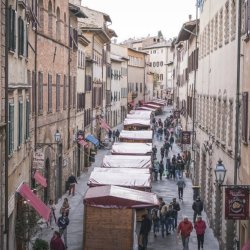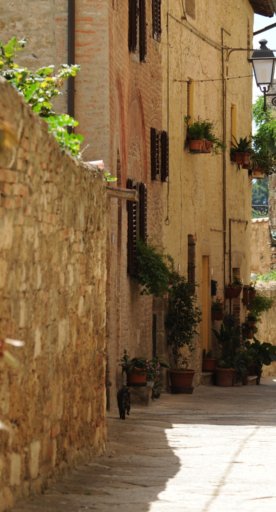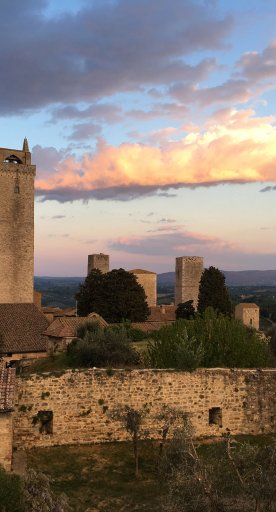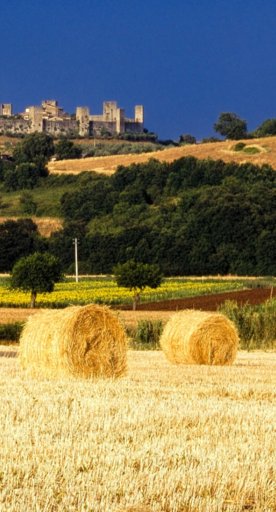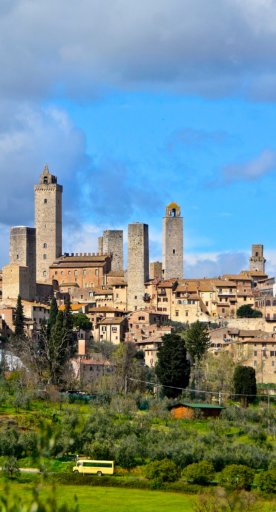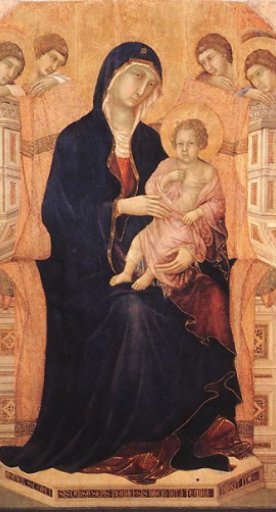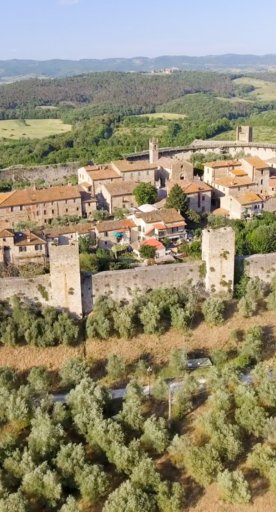A Volterra vampire itinerary (for normal people too!)
A one-day itinerary in Volterra, the setting for New Moon, the second vampire book in the Twilight series
Over the last decade Volterra has appeared on the tourist radar thanks to it being the setting for New Moon, the second part in the Twilight vampire book series. Despite the fact the city has come up with some brilliant New Moon tours to appeal to vampire-fans, "normal people" need not worry. Your neck is safe in Volterra (it's the home of the Volturi coven, but you can always bring a bit of garlic!) and your art-loving side will certainly be satisfied.
Volterra is a small town, and although one could stay there, it's a perfectly do-able day trip by car from Florence. So, what follows is not a strict itinerary but a list of the highlights of Volterra - what to see if you're a "normal person" or if you're a "vampire". You can see everything in one day and still have ample time for a long lunch. Pick up a map at the tourist office in Piazza dei Priori (the main piazza, including the Duomo and the city hall - you can't miss it) to easily locate all the spots below. They are in walking distance of one another.
-
1.Volterra - a very short history
-
2.What to see in Volterra
-
3.Volterra for Vampire fans
Volterra - a very short history

Volterra is a walled hill town in an area called the “Metal Hills” (Colline Metallifere), named as such since Etruscan times due to the presence of copper, lead, silver, and zinc in the area. The Etruscans also mined salt here. The district is particularly known for working with alabaster, and there are also mineral springs and baths nearby. The Etruscan name of this town was Velathri and it was where the Etruscan confederation held their most important meetings. As such, there's a good concentration of Etruscan art on show (see below). After the Etruscans were defeated by the Romans, it became a municipium and throughout the middle ages the city was a bishop's residence until it fell into the hands of Florence and eventually of the Medici family and Grand Duchy of Tuscany.
What to see in Volterra


The Guarnacci Etruscan Museum contains important Etruscan artefacts and the Etruscan Gate, from the 4th century BCE, forms part of the town’s defensive wall (about 7km long). Why not also go for a bit of a hike up to the Roman Ampitheatre (1st century BCE)?
The Civic Museum boasts the town's most important painting from the late Renaissance period - Rosso Fiorentino's Deposition from the Cross, a Mannerist masterpiece from 1521. The rest of the museum contains works that demonstrates the alternating domination of the town by the Sienese and Florentine states.
On Piazza dei Priori sits the city hall (Palazzo dei Priori). Designed by Maestro Riccardo in 1239, as per the inscription, it has a three-storey façade with trilobed double arched windows in the Medieval style. Nearby is the Cathedral, understated from the outside, 16th century on the inside and near to the Alabaster Museum (Ecomuseo dell'Alabastro). Outside the town, the surrounding area is home to a special exhibit of large-scale landscape art by Mauro Staccioli; a unique opportunity to consider the contrast between the age-old landscape and contemporary art.
Volterra for Vampire fans
As you know, Volterra is the place in the Twilight New Moon book to which Bella runs when she learns that Edward wants to end his "life" by handing himself over to the bad vampires, who just so happen to be here in Tuscany. Author Stephanie Meyer visited the town in 2006 and identified the locations mentioned in the book. When the film of New Moon was shot in Italy, producers chose the town on Montepulciano over Volterra, much to the joy of the wine-producing town. Volterra didn't let this cramp their style, however, they are the authentic hometown of the Volturi! So, if you're a huge New Moon fan, you'll want to come to Volterra and see the places visited by the characters in the book like the Piazza dei Priori at noon, or the memorable dark alley down which Bella runs to reach her love.





